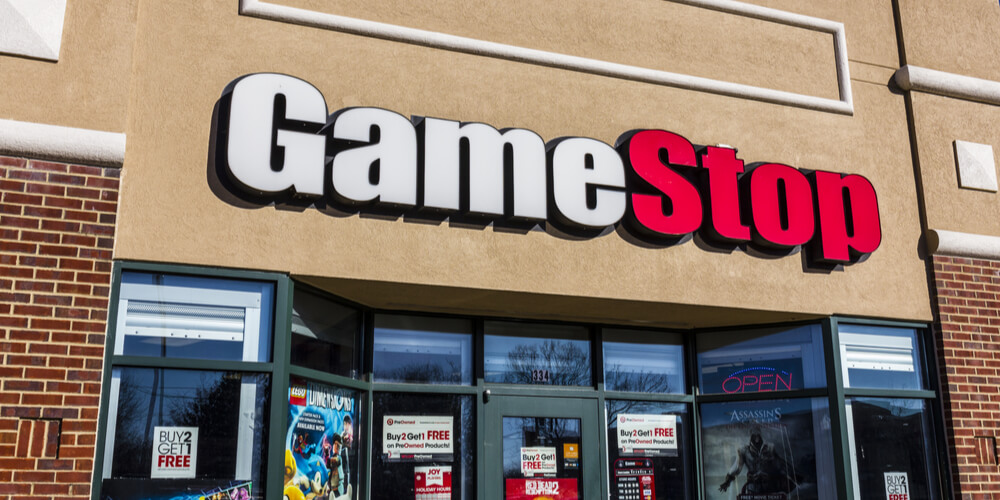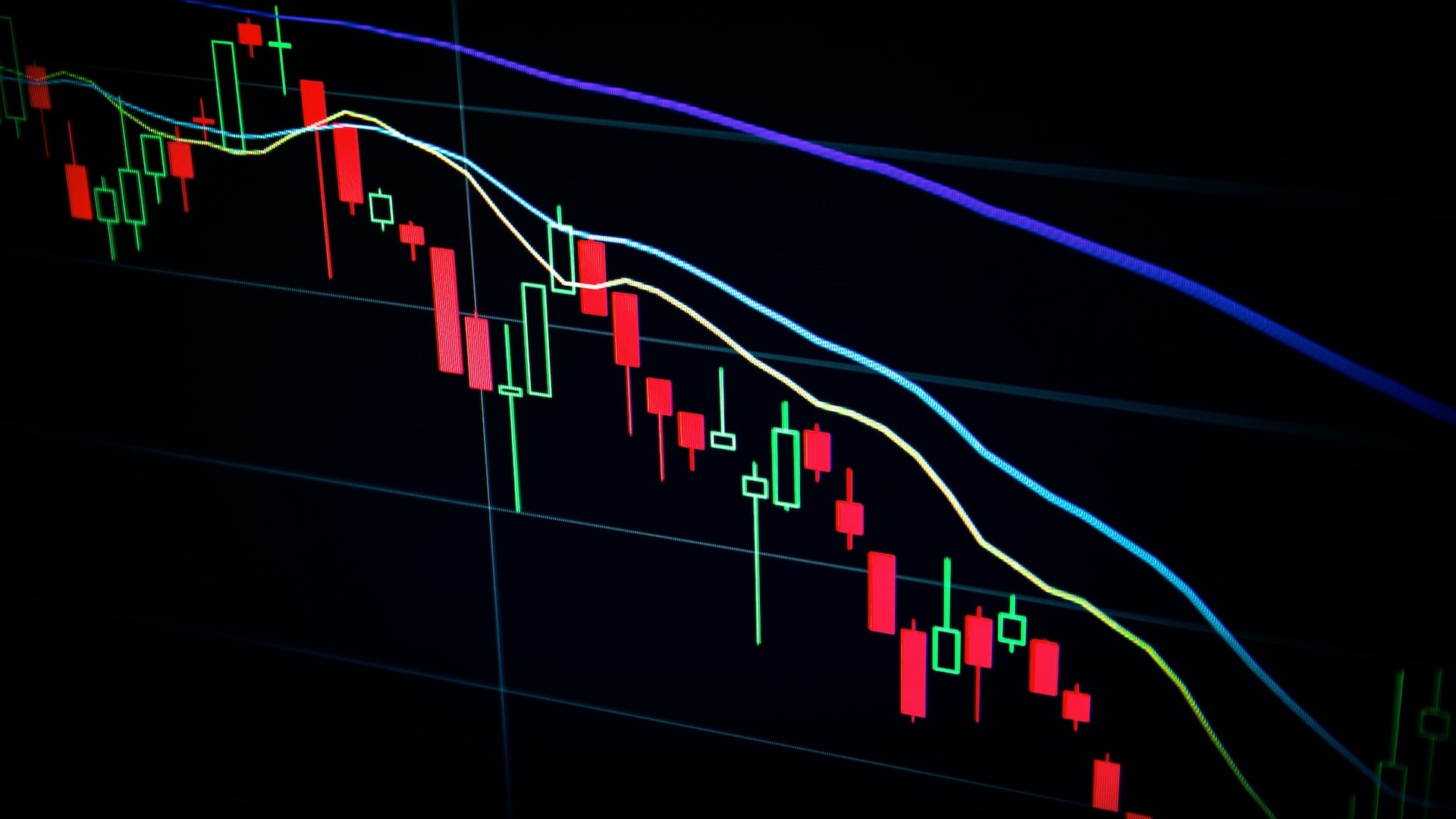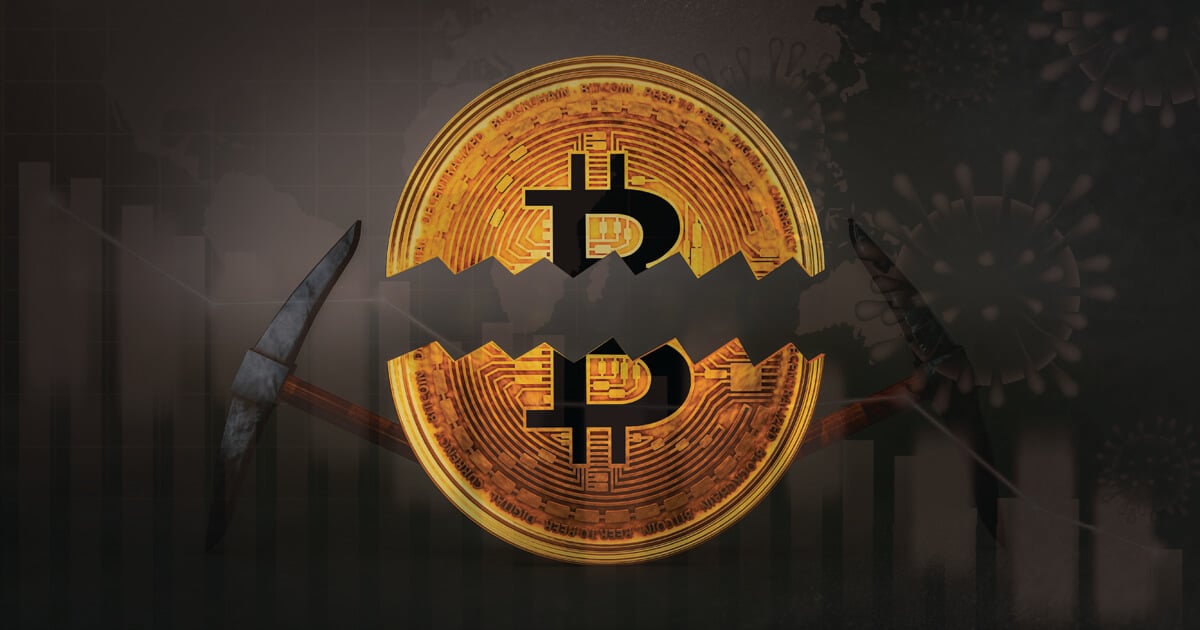It has been revealed that Michael Burry the investor of ‘Big Short’ fame has used put options to take a huge short position against Tesla. What are put options and how does Burry’s trade work?
----------------------------------------
The Story: Burry’s put options
A 13F filing (May 17, 2021) from Scion Asset Management the private investment firm created and run by Michael Burry has taken out a massive put option position in Tesla (TLSA).
What is Burry trying to do here?
He is using the options market to sell Tesla shares short, meaning he has positioned his firm to profit when Tesla shares go down.
This bearish bet covers over 800,100 TSLA shares. That is a huge trade with a notional equivalent value over $530 million, which makes it his biggest position taking up 40% of his entire portfolio in nominal terms. You could say he’s gone ‘all in’.
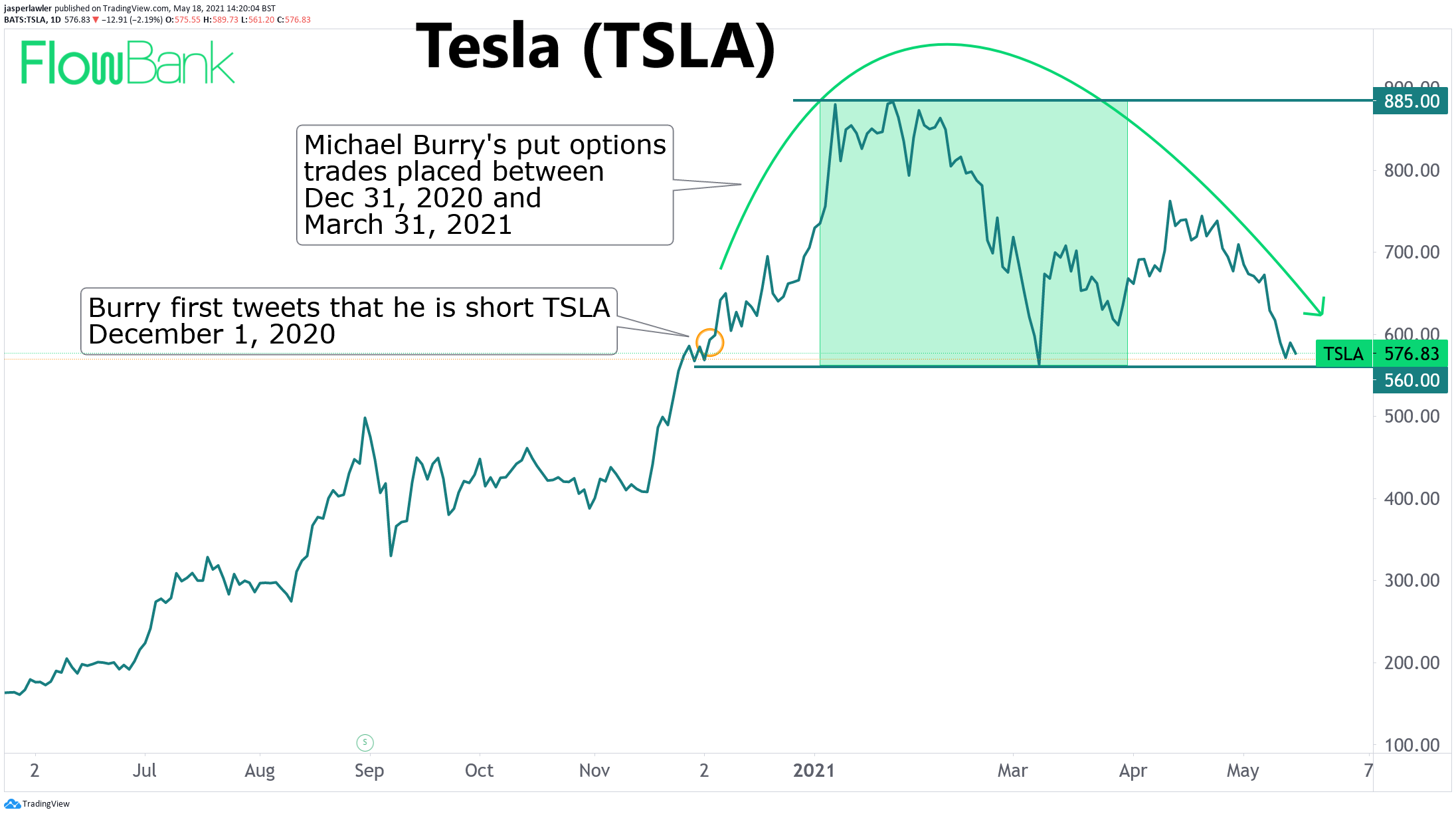
The filing does not reveal the timing of the positions or the strike price or expiries, we only know they were put on in the first quarter. Given that Tesla stock has taken a serious downturn of late – the position is likely profitable.
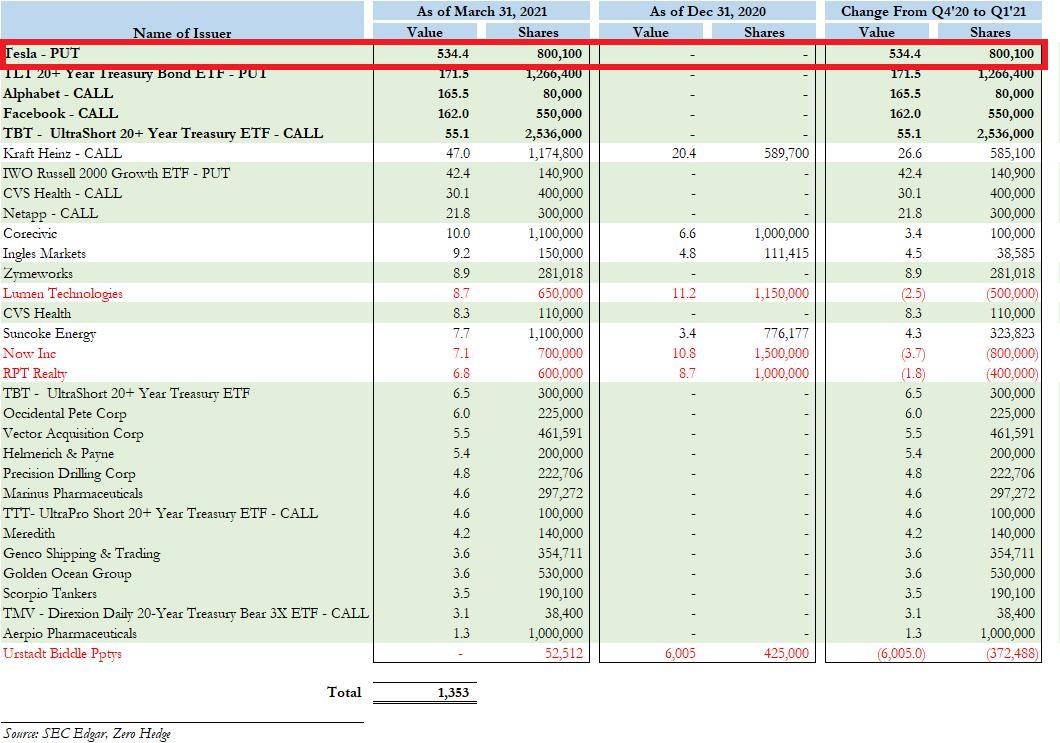
He did reveal in a tweet that he was short in early December, presumably with a smaller position
"So, @elonmusk, yes, I'm short $TSLA, but some free advice for a good guy ... Seriously, issue 25-50% of your shares at the current ridiculous price. That's not dilution," Burry tweeted.
Interestingly the TSLA share price is sitting right around the level of his first tweet and near the 2021 YTD low.
Definition: Put option
Options give an investor the right but not obligation to buy or sell a security. They are a derivative instrument that derives its value from another financial market, typically referred to as ‘the underlying’. The price of the option will change in line with the price of the underlying.
All options have a strike price and an expiry date.
The strike price is a price the underlying asset must reach before the option can be exercised (used).
The expiry date is when the option expires worthless.
A put option is bought when the investor expects the underlying market to go down
A call option is bought when the investor thinks the underlying market will go up.
It is the vice versa for sellers (or writers) of options.
A put-buyer (like Michael Burry) pays a premium for the puts. The premium is the most the put-buyer can lose from the trade. This is unlike if the trader were to have taken a naked short position out on the underlying market, which could result in unlimited losses.
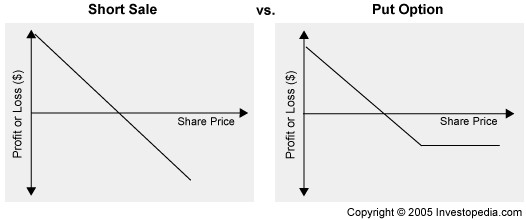
If the price of the underlying falls below the strike price by an amount that covers the amount paid in premiums, then the put-buyer stands to make money on the trade. Otherwise, the put buyer will lose either the full amount or part of the premium paid.
To realise the profit or loss, the put-buyer can either sell the put or exercise the option to sell the shares and buy them back again.
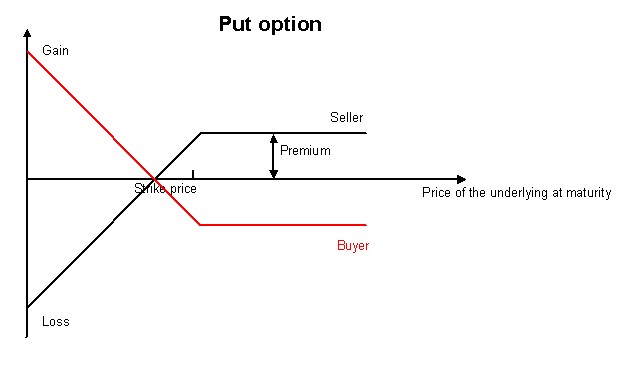
Put options can be in, at, or out of the money:
- In the money means the underlying asset price is below the put strike price.
- Out of the money means the underlying price is above the strike price.
- At the money means the underlying price and the strike price are the same.
An example long put option trade in Tesla
Tesla is currently is trading for approx. $590 per share.
Let’s say Michael Burry thinks the Tesla share price will be cut in half. This is presumably more aggressive than his actual bet – but he did go short the US housing market so let’s not rule anything out completely!
The FlowBank Pro Options Board shows a TSLA put option with a $300 strike price and September expiry is priced at 4.70 / 4.95. The cost of the premium is low because the option is so far out of the money.
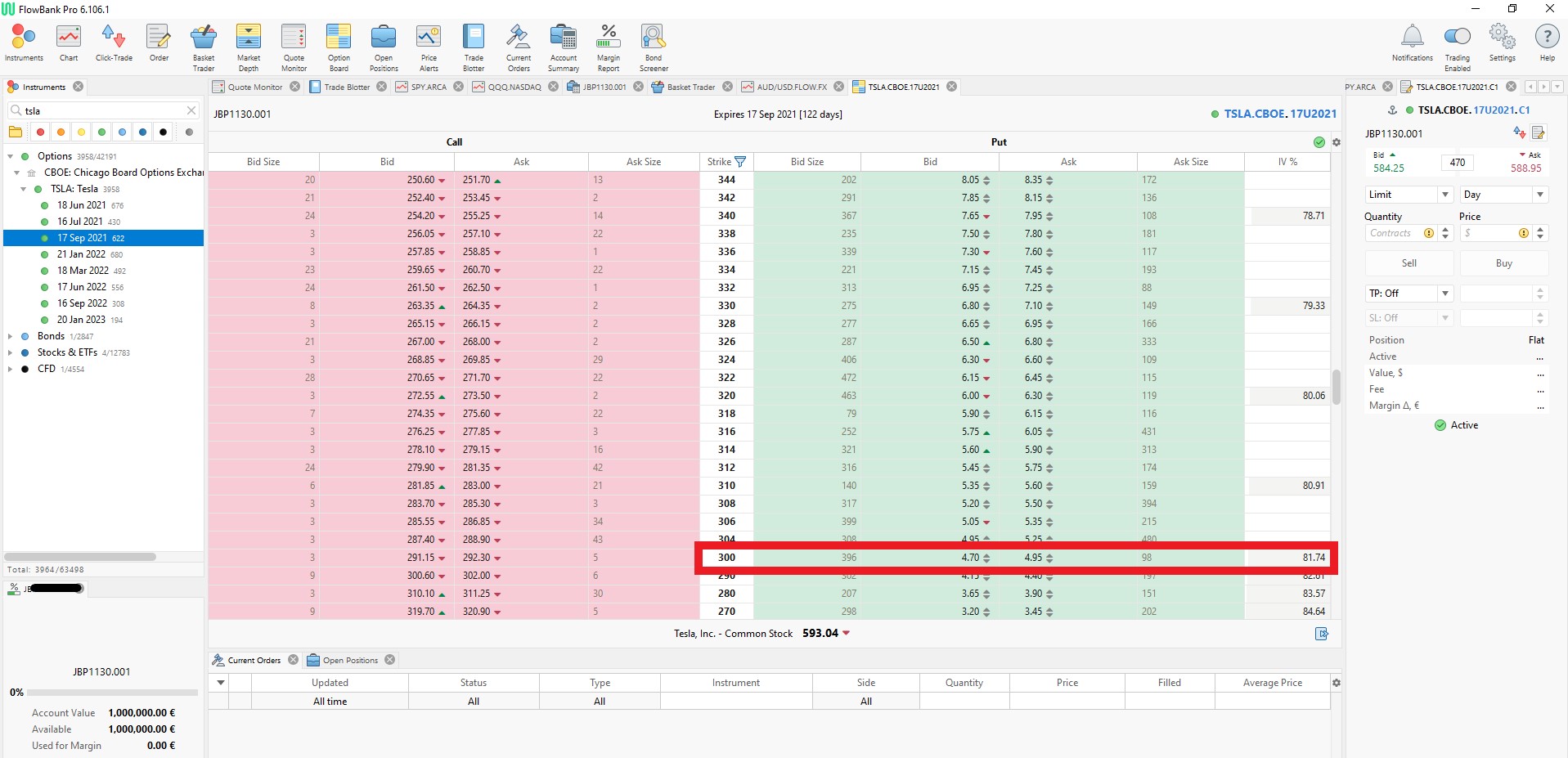
Let’s make a simpler example.
Puts with a strike price of $300 are available for a $30 premium and expire in six months.
In total, one put contract costs $3000 ($30 premium x 100 shares).
Because one contract represents 100 shares, for every $1 decrease in the stock's market price below the strike price, the total value of the option increases by $100.
The breakeven point — below which the option begins to earn a profit, have intrinsic value or be in the money — occurs at $270. That is the strike price of $300 minus the $30 cost of the put.
If TSLA stock trades between $270 and $300, the option will retain some value, but does not show a net profit.
If the stock remains above the strike price of $300, the option is out of the money and becomes worthless. So, the option value flatlines, capping the investor’s maximum loss at the price paid for the put, of $30 premium per share or $3000 total.
What is the payout on a long put on TSLA?
We can use the options profit calculator to find calculate the likely results of a real Tesla options trade if it were executed at today’s price.
With a bit of help from https://www.optionsprofitcalculator.com/calculator/long-put.html
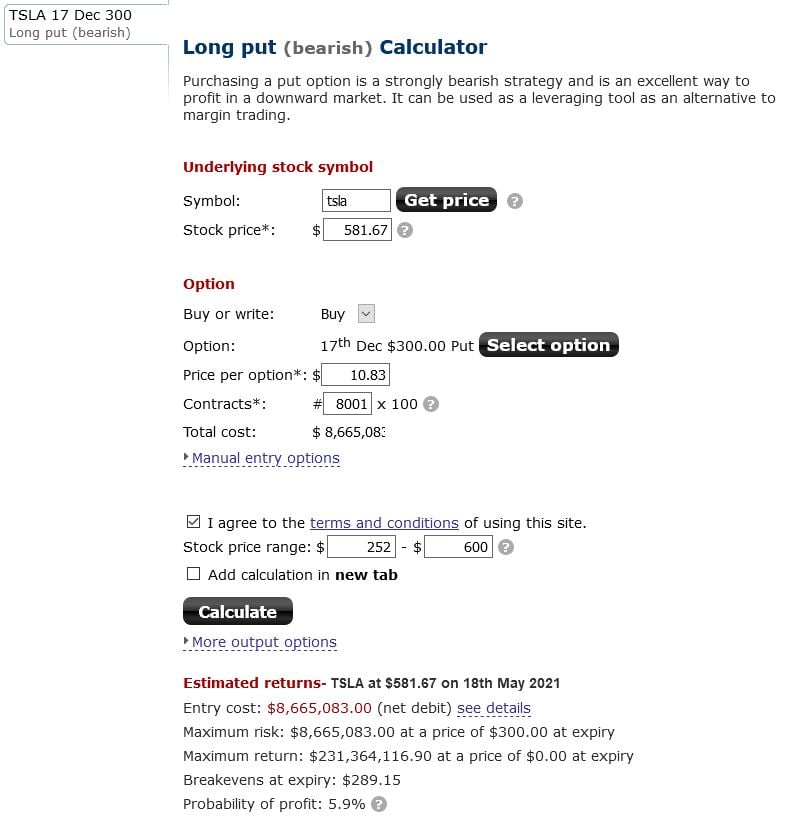
The potential profit/loss at various prices and dates in $ value looks as follows:
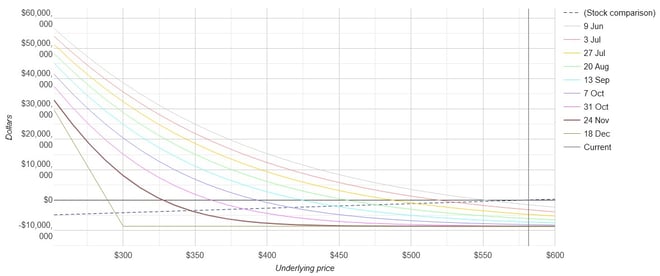
Let’s wish Michael all the best with his trade but I think both he and Elon will be just fine under any scenario!



